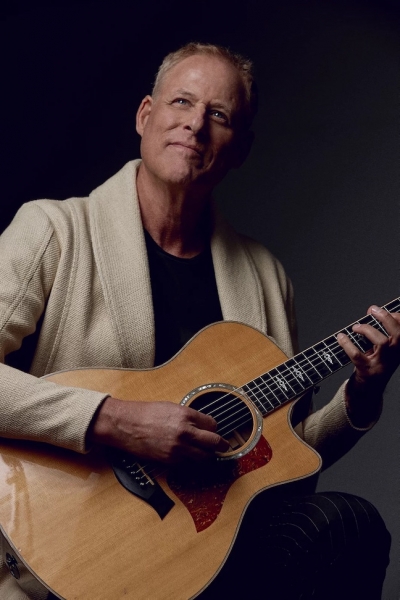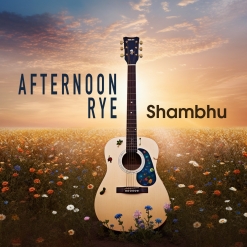I have been reviewing Shambhu's guitar albums since his 2010 debut,
Sacred Love, and he has become one of my favorite guitarists. He is getting ready to release
Acoustic Oasis, a solo acoustic guitar album, on October 6, 2023, and it just might be my favorite of his albums. I'm not sure why we haven't done an interview before now, but I think we more than made up for it with this one! I've really enjoyed getting to know more about this incredible musician, and I think you will, too!
KP: Hi Shambhu! How are things on the East Coast today?
S: The East Coast is calm. I hear the soothing sounds of Nature most of the time as I live in the Hamptons adjacent to farmland.
KP: That sounds really nice! "Lazy Afternoon," the second of three singles from your newest album, Acoustic Oasis, was released on September 7th. Tell us a bit about the piece.
S: "Lazy Afternoon" sounds and feels just like the title. It’s super relaxed, like a vacation in sound. How many of us struggle to let go of life pressures? This song invites us to empty our minds and open our hearts.
KP: A very good reminder! The third single, "Afternoon Rye" drops on September 29th. I'm curious about what the title refers to.
S: The name "Afternoon Rye" was inspired by “the amber waves of grain” which we sing about in the song, "America, the Beautiful." In my 20s, I had the idea to stage a cross-country bicycle relay to celebrate the life of Sri Chinmoy. A team of cyclists crossed America relay-style and while riding in the midwest, for the first time, on a steamy hot afternoon, I saw the amber waves of grain, and it was a big moment.
Each song on the album starts with a feeling, a flow or a groove that might be reflected in a set of chords, a melody, a rhythm or a combo. "Afternoon Rye" came through with an opening line; I played around with it, and over the course of several versions, the rest of the song emerged. In the end, the melody line felt like it needed to stand alone, setting up a nice question and answer dialogue.
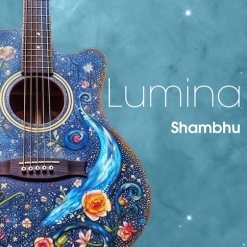
Click on album covers
to go to Kathy's reviews.
KP: Interesting! I have reviewed all three singles as well as the full album, and those reviews will be popping up on MainlyPiano.com as we get closer to each of the release dates. The full album, Acoustic Oasis, drops on October 6, 2023. I know that you improvised all of the music on the album during a weekend this past January. Did you know that weekend that you had a full album of music ready to be born?
S: My friend Kabir Sehgal suggested that I should go for a simple acoustic guitar album. Instead of starting with a large folder of unfinished songs, I decided to write new ones on a Friday afternoon and with a specific intention: to write and record ten songs by Sunday night. As it turned out, I had 16 songs in various stages of completion by Monday. Except I had no idea what they sounded like. I went from one to the other, and just let it flow. Over all of February into early March, I was in my studio listening to these songs, cleaning up the guitars and adding additional instrumentation as needed (with me playing all the additional instruments). I ended up choosing 10 songs for this album.
KP: When you added the other instrumentation to the acoustic guitar on the album, were those additions improvised, too, or were they more planned or intentional?
S: In music, I have always relied on my perfect pitch - and still do. I generally know what a song wants and, to the best of my ability, I try to find the notes. Wearing my producer hat, if I feel that a guitar or two is just not enough to carry a song, I will add a bass and/or an Omnisphere pad as color and fill. Among the things I learned from working with Will Ackerman is to serve a song – feel what it needs, add those parts and nothing more. Forget the flashy licks.
KP: You are quoted as saying, "These are short songs that were recorded over a weekend that embody heart and hope, songs we can turn to for calm and focus when needed." It really seems like the need for places of refuge and peacefulness gets stronger every day, and music really seems to help. Do you consider your music to be "music with a purpose"?
S: I do. Music and meditation are cornerstones of my life. I was born with musical ability. Thanks to my parents, I had a solid career going in music by the time I graduated high school. After meeting drummer Narada Michael Walden, I joined Sri Chinmoy’s spiritual path. Once he saw I was an aspiring professional musician, he suggested that I should let go of commercial music and work at the United Nations. Over time I sold my guitars in an act of renunciation. It was spiritually good. But in retrospect, my guitars would have been worth around $80,000 today. After renouncing music, I needed to earn money. So I eventually started playing gigs again. By 1986, I left UNICEF to pursue public relations consulting. I launched the
Peace Run, a global relay run for world Peace, and formed two new age music groups with a view to playing Sri Chinmoy’s meditation music - Guitar Spirits and
Equinox (with Premik Russel Tubbs). These groups toured the US, Canada and Europe. I loved the experience of performing spiritual music on stage and lifting audiences with music. When I started my recording career in 2010, I picked up where I left off. Except the songs were now mine. To honor Sri Chinmoy, I did record "Nirab Amare" on my first release
Sacred Love, featuring Premik Russell Tubbs.
Video of the Imaginary Road session. He and I had recorded the same song some 24 years earlier on the Equinox release.
KP: I have reviewed all seven of your albums since your 2010 debut, Sacred Love, plus several singles, and have loved them all. Acoustic Oasis just might be your most soulful recording yet, and is undoubtedly your most peaceful. What is your intention with your music?
S: Thank you, that’s super kind of you to say so. My intention is to share peaceful, uplifting music that emerges from my heart, and lifts and inspires listeners. This album in particular has a very calming tone and there’s a consistency to the songs as they all emerged over the same weekend.
KP: You have said that meditation is a big part of your lifestyle. I would assume that it's also a big part of your music. Let's talk about that a bit.
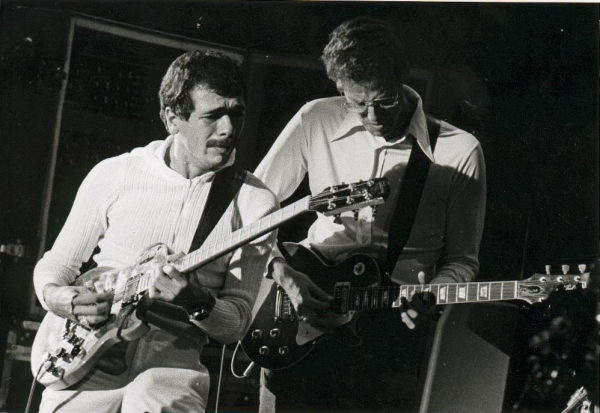
Playing with Carlos Santana at a benefit show - age 21.
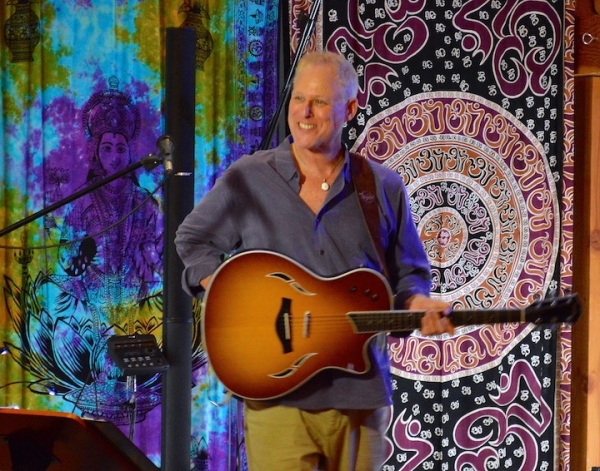
Live at Pilgrimage Yoga
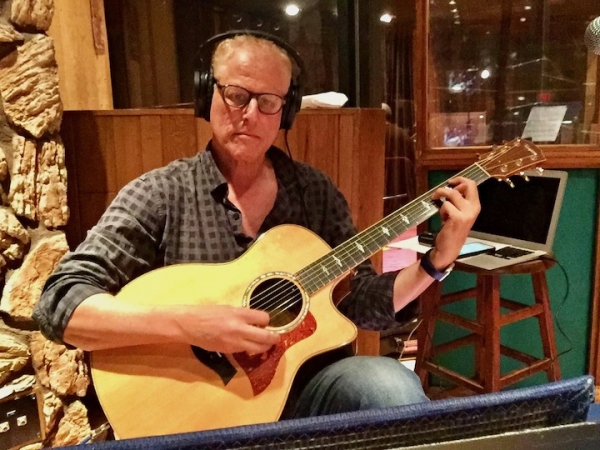
Recording "Lilac Skies" 2017
Meditating at the Sri Chinmoy Centre with Carlos Santana and John McLaughlin, I watched as their music changed. They put out a joint album titled,
Love Devotion Surrender, inspired by the teachings of Sri Chinmoy and intended as a tribute to John Coltrane. The Mahavishnu Orchestra was a magnet for me. It drew me to John McLaughlin’s life. I eventually met Narada Michael Walden who was an incredible drummer and meditation student of Sri Chinmoy. I went through my own transformation as well. I jammed often with Carlos Santana and was inspired by Sri Chinmoy’s music. I eventually recorded three albums and performed globally with Equinox and Guitar Spirits in the mid-80s.
It took me until 2008 to start exploring the questions: What was my music? What did it sound like? What should I record? Who should I be? I started jamming, recording and listening back. Rinse and repeat. I was looking for my sound. I was looking for my songs. And I was looking to reflect a deep inner feeling inside the music. After a while, I started to hear song ideas repeat and I developed them. "Edge of Eternal," "Revelation" and others. These are the songs of my first release,
Sacred Love.
KP: I am fascinated by your quote in an email to me that said: "I have no desire to entertain and simply offer this music from the heart." Let's explore that.
S: When I was 21 entering the meditation experience, my music was all about entertaining and dazzling audiences as a lead guitarist. I was also teaching guitar, recording, and making a living with music. I had no idea what my music was. All I knew was making money with music. And it was fairly easy for me. Now I want my music to reflect my inner Nature and serve to uplift others around me and add some light to the world.
KP: Do you still perform in concert? Or does your music work better in smaller groups and workshops?
S: I have played a few larger shows but I prefer smaller venues. This music works better with smaller groups. These days, however, I am mostly recording with an occasional performance.
KP: Your first couple of albums were recorded at Imaginary Road with Will Ackerman and his crew of musical geniuses. I would think it would be much more difficult to get into a meditative state when there are a lot of other musicians and engineers in the studio. Is that true?
S: Will’s studio is the best place for a solo artist to create and record. It’s pristine, calming, gorgeous, and I’ve told him that, for me, it’s a temple. Will designed and built it with sound perfection in mind, and he has more than achieved it. We artists get to share in the magnificence of that space. I did a YouTube series on
The Making of Sacred Love and you can see myself, Will and our fellow artists (i.e. Tony Levin, Jill Haley, Premik Russell Tubbs, Jeff Haynes, Charlie Bisharat and others) in action.
KP: When did you establish your home studio?
S: I set up my Hamptons Sanctuary Studio in 2019 as part of the renovation of my home. I have a four-microphone set-up to capture my acoustic guitar. I recorded Heart Awakening, Life Passage and Acoustic Oasis over here. The studio is always on with a canvas ready to fill. Just press R on the keyboard. I try to capture everything and find new songs when I listen back.
KP: You have collaborated with a very impressive number of musicians and singers. What have been some of your favorite projects?
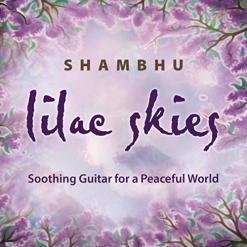
Click on album covers
to go to Kathy's reviews.
S: Sacred Love and Dreaming of Now were life-changing experiences because I got a chance to work with and learn from Will Ackerman and great artists. Just look at these artists who play across my albums: bass players Tony Levin, Michael Manring, and Kai Eckhardt; saxophone players Paul McCandless, George Brooks, and Premik Russell Tubbs; bansuri flute virtuoso Ravichandra Kulur, pianist Frank Martin, drummer Celso Alberti, percussionist Jeff Haynes, English horn virtuoso Jill Haley, and many others.
KP: Those are definitely some of the very best!
Okay, let's back up and find out more about your early life and background. Where were you born and where did you grow up?
S: I was born in Queens, New York. My parents moved the family to North Woodmere on Long Island when I was a year old and I grew up in suburbia.
KP: When did you get interested in music?
S: My parents noticed me beating my hands to the music on the car dashboard at a very early age. At five years old, my mother signed me up for piano lessons at the Harbor Conservatory. At the time, I wanted to play my own songs, and the teacher and I did not get along. So I quit. At seven, my mom insisted that I study another instrument and she found an exceptional jazz guitarist, David Sarrett, to take on a strong-willed 7-year-old. He taught me jazz in the style of Johnny Smith. Starting at 10.5 years old I was playing in various rock bands. To challenge me, my teacher had me learn and perform "Flight of the Bumblebee" and "12th St. Rag" at Tesla speeds while in middle school. At 16, I studied pedagogy and taught guitar at the same at Harbor Conservatory where I began at 5 years old. In my senior year of high school, I was offering 24 lessons a week. Two years later, I was teaching guitar and jazz ensemble at Five Towns College on Long Island, writing music for off-Broadway shows.
KP: That's amazing! You started playing professionally at 10 1/2 years old?
S: Yes, my mother put me in a band with several of the neighbors' kids. My brother Barry and I then formed our own band, The Telstars, with a local keyboardist and drummer. We played up to four parties over a weekend in the tri-state area. I joined Local 802 AFM because we were gigging in union halls.
I wrote about the Telstars on my blog.
KP: That's a fun read! Did you play in other rock bands?
S: All through elementary and beyond high school. I never loved the performing part, but I loved the cash. It was something we did. It was our lives growing up. I learned how to lead a band and arrange for a band. In high school, I formed a Chicago style band, The Lonely Crowd, and loved bringing in a new chart like "Introduction" by Chicago.
KP: Did you record with any of the bands?
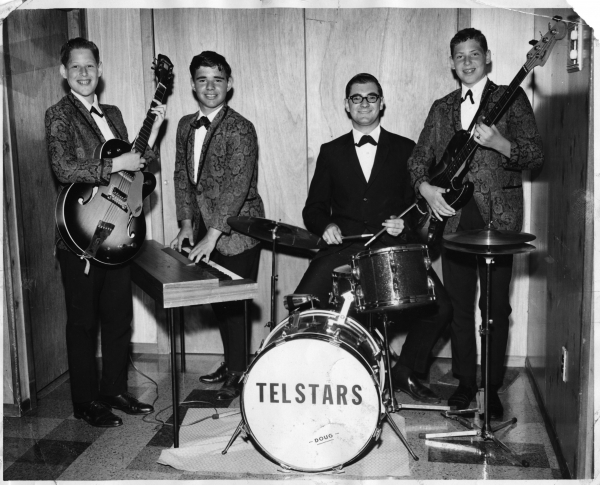
Telstars at 11 years old.
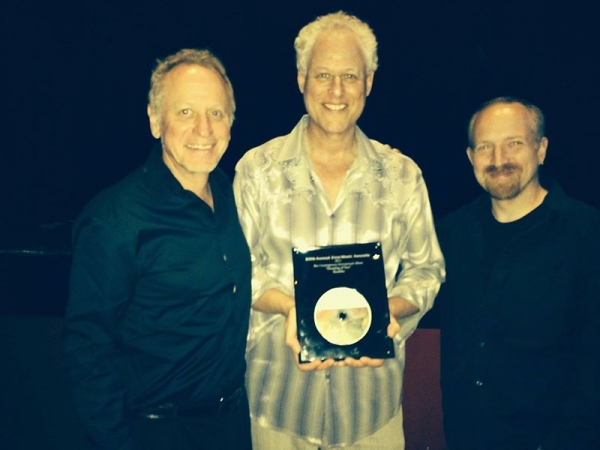
ZMR Awards with Will Ackerman and Tom Eaton 2012

At Imaginary Road Studio with Eugene Friesen, Will Ackerman and Tom Eaton 2013.
S: We recorded both The Telstars and The Lonely Crowd - in middle school and high school - at Ultrasonic Studios in Hempstead, New York. I had the good fortune to work in a 16-track studio where a young Billy Joel was recording. And when I did my own song demos of pop tunes, I recorded them at Ultrasonic working with Michael Tapes, who later went on to form SoundWorkshop audio boards and sold his company to Sony.
KP: Who and what were some of your musical influences growing up?
S: Jazz: Buddy Rich, John McLaughlin, the Mahavishnu Orchestra, Brecker Brothers, Larry Coryell, Weather Report and Cecil Taylor. Rock/R&B: The Beatles, Motown, Joni Mitchell, Chicago, Blood Sweat and Tears. World: Ravi Shankar, Milton Nascimiento. Classical: Ralph Vaughan Williams, Leonard Bernstein, Erik Satie, Claude Debussy, Ravel. New Age: Windham Hill, Narada Records. Broadway: Bernstein/Sondheim’s West Side Story, Hair.
KP: You said you discovered meditation at the age of 21. How did that affect your music?
S: It changed everything. It caused me to think. I was getting called to play jingles in New York City working with guitarists like Jeff Miranov, and I thought, is this success? It must be. I’m playing well and making a ton of money. But this can’t be it because I’m getting almost no real satisfaction from the music. When I saw how meditation could inspire music that lifted spirits, that moved me.
KP: When did you become "Shambhu"? What does the name mean?
S: Shambhu is a name given to me by Sri Chinmoy when I was 23 years old. I had been his student for 2.5 years at the time. During the first years with him, I produced
Music for Meditation, Sri Chinmoy’s first album of esraj music, and I secured a deal with Folkways Music (now part of the Smithsonian collection) to release it. Shambhu is the intuitive aspect of Lord Shiva. Sri Chinmoy said the name embodies my soul’s quality and mission – “the life’s opportunity and the soul’s promise to become a perfect instrument of the Master.”
KP: Interesting! Have you always been a professional musician or have you had another career as well?
S: I’ve had several careers: First, music. Second, service to Sri Chinmoy’s mission, including creating the 155-nation
Peace Run. Third, public relations, representing clients like mp3.com, e-music, Webshots, IBM, Sony, United Airlines, Procter & Gamble and dozens of other major brands and technology startups. In 2017, I helped launch an IoT technology accelerator in Hong Kong. In 2022 I helped a Dubai team launch a decentralized Internet infrastructure powered by crypto and blockchain.
KP: Wow! You really need to write an autobiography! Are you a full-time musician now?
S: I am doing music full time and keep a full plate of musical projects.
KP: Which instruments do you play besides guitar?
S: I studied clarinet in middle and high school, piano in college, and I doubled on bass professionally when I played club dates..
KP: Were you a music major in college?
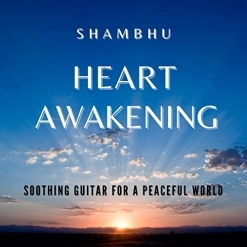
Click on album covers
to go to Kathy's reviews.
S: Yes, I attended Manhattan School of Music as a theory/composition major with a minor in piano. I also studied arranging on the side with the prolific jazz arranger, Dr. Maury Deutsch.
KP: How old were you when you wrote your first song/piece?
S: I recorded a demo of original songs at 18 years old, aiming to get a record contract. They’re still viable. The next year, I wrote a score for an off-Broadway show that included a melody that I loved. I released it as "Lilac Skies," the title track of my fourth album.
KP: I remember really liking that piece! Who are some of your favorite composers?
S: My style is a mash-up of rock, jazz, new age, classical and world (Indian, Brazilian) influences. My favorites are Ralph Vaughan Williams, Aaron Copeland, Erik Satie, Chick Corea, Maurice Ravel, Igor Stravinsky, Leonard Bernstein, and Stephen Sondheim.
KP: That's really a varied group, but I'm not surprised! Who are some of your favorite performers?
S: The Beatles, John McLaughlin, Pat Metheny, Mike Stern, Jonathan Kreisberg, David Grisman, the late Chick Corea, and the late pianist Bill Evans.
KP: What kinds of things do you like to do when you're not doing music?
S: I travel, swim, cycle and work out at the gym. I’m actually heading to Nepal, India and Thailand early next year to explore the Shiva temples, meditate and record a new album in Bangalore.
KP: That sounds like a really fascinating trip!
If you could have any three wishes, what would they be?
S: May love conquer ignorance. May peace dawn in all our hearts. May hundreds of millions of people discover my music.
KP: I love it! Is there anything else you'd like to talk about?
S: I’d like to thank you for your kindness over so many years. And I invite readers to follow me where you listen. Buy and like my songs. It really helps when fans give love back to artists in these ways.
Many thanks to Shambhu for taking the time to chat! For more information about Shambhu and his music, be sure to visit
his website and his
Artist Page here on MainlyPiano.com!
Kathy Parsons
September 2023

